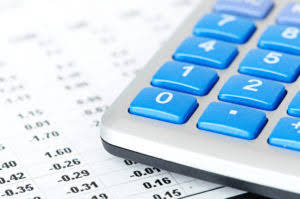
Having a process for SKU rationalization also helps you understand if a product is profitable or not. If the costs (and subsequent sales) don’t justify supporting a particular product, then it’s time to discontinue it. Dealing with these common inventory challenges can hike up logistics costs, from higher storage costs to returns management how to calculate cost per unit (e.g., shipping labels, processing and restocking). Any expense incurred in the storage of unsold inventory is referred to as holding costs. These costs can range from warehousing to labor costs, to depreciation and opportunity costs. In terms of salaries, rent, and other overhead, their monthly fixed cost of production is $5,000.
Variable Costs: Definition and Examples
Prices paid for electrical work are hard to nail down because it’s dependent on many factors, such as labor and material costs. For more accurate prices, request free cost estimates from local electricians here on HomeGuide for the service you need. Rather than renting a warehouse and hiring/managing a staff, you can store inventory in multiple fulfilment centre locations within our network and track storage costs through the ShipBob dashboard. These costs can range from warehousing to labour costs, to depreciation and opportunity costs. Use this square footage calculator to easily calculate the area of a rectangular room or a room with a more complex shape. However, below the break-even point, such companies are more limited in their ability to cut costs (since fixed costs generally cannot be cut easily).
Example: Activity-Based Management
As the scale of your production increases, the cost per unit decreases. The reason is that fixed costs get distributed over more units, lowering your CPU. The sum of the manufacturer’s fixed and variable costs, i.e. the total cost of production, comes out to $600,000.

Cut material costs
Partnering with ShipBob is one of the best ways for ecommerce businesses to reduce costs by taking advantage of an international fulfilment presence and storing inventory closer to your customers. In contrast, costs of variable nature are generally more difficult to predict, and there is usually more variance between the forecast and actual results. Variable costs are directly tied to a company’s production output, so the costs incurred fluctuate based on sales performance (and volume). Inventory gets stored in proximity to areas of high demand, ensuring same-day and next-day delivery. WareIQ provides a Warehouse Management System and expertise for efficient management of inventory and warehouse processes. To calculate the cost per unit, simply divide the total cost by the total number of units.
- ABC can also provide valuable information for managerial accounting purposes, such as identifying which activities are value-added or identifying opportunities for cost-cutting measures.
- A unit cost is the total expenditure incurred by a company to produce, store, and sell one unit of a particular product or service.
- The average of a set of values is the total of those values divided by the number of items in that set.
- In the following article, we shall go through the fundamentals of this concept, including the formula for calculating the cost per item.
- The first section of a company’s income statement focuses on direct costs.
- These costs can range from warehousing to labor costs, to depreciation and opportunity costs.
Breaking Down the Cost Per Unit Formula
This enables eCommerce businesses to focus on growing their business and outsource all inventory management and shipping requirements while ultimately reducing shipping costs. It is important to build a logistics platform with a third-party logistics provider that has the required number of people, processes, and technology to report costs and service performance. Plan, execute, and optimise your transportation network with effective communication to all the involved parties. Look at procurement processes, mode selection, and supply chain network design. Don’t forget the KPIs, including reporting, monitoring, and logistics process improvement. Examining trends over time helps cut unnecessary costs and inefficiencies in the supply chain.
Is there any other context you can provide?
This cost per unit indicates that any car sold above $1200 will be a profitable deal. Any car sold at this CPU will be a break-even (no-profit-no-loss) https://www.bookstime.com/ deal. People sometimes fail to assess the cost per unit accurately because they do not understand or incorrectly evaluate its components.

A thorough understanding of the cost per unit can help determine how much businesses should charge for their products or services to enable efficient operations and maximize profits. Fixed costs are the expenses that remain constant regardless of the level of production or sales volume. Rent, insurance, salaries, and interest payments are examples of fixed costs. For example, if a company rents a warehouse, rent doesn’t go up or down if they produce 100 pairs of ice skates or 1,000. Buffers are supplies or products kept in place to deal with demand forecasting or supply chain fluctuations that can arise in the future.
The formula for Cost Per Unit

Private and public companies account for unit costs on their financial reporting statements. All public companies use the generally accepted accounting principles (GAAP) accrual method of reporting. These businesses have the responsibility of recording unit costs at the time of production and matching them to revenues through revenue recognition. As such, goods-centric companies will file unit costs as inventory on the balance sheet at product creation. When the event of a sale occurs, unit costs will then be matched with revenue and reported on the income statement.

Reduce holding costs
Technology and automation can improve efficiency and minimize errors, reducing total production expenses and hence, the cost per unit. The calculation of the average cost is relatively straightforward, since the per-unit cost represents the ratio between the total cost of production and the total number of production units. Moreover, Flowspace offers an in-depth product inventory management system, granting brands full transparency over their stock.
